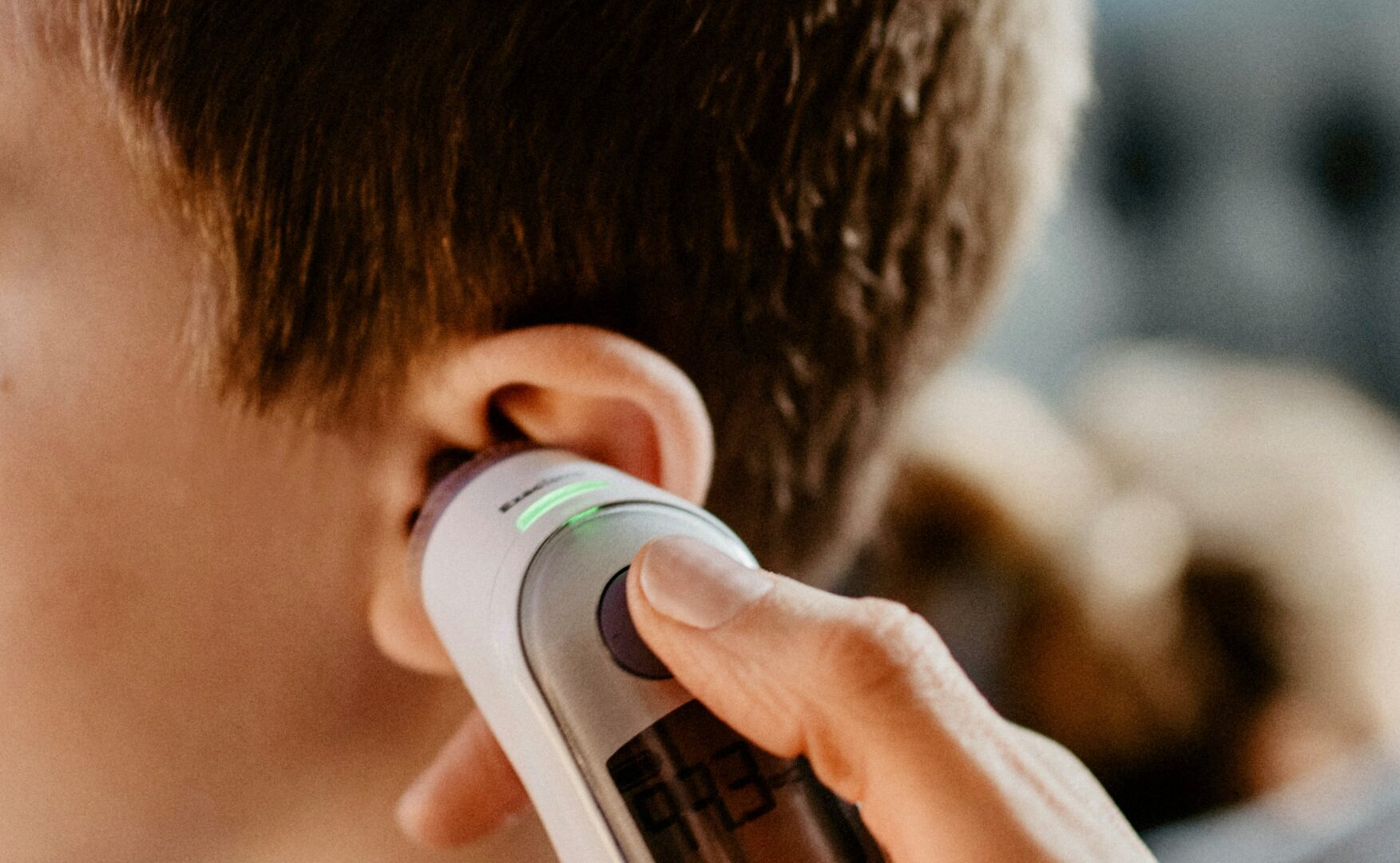Strep throat, an infection of the throat and tonsils caused by bacteria called A Streptococcus (group A strep), most commonly presents itself with throat pain. However, it can manifest itself in many ways. Other strep throat symptoms can include a high fever, which can be very worrying for parents and distressing for children. Here, we take a look at the signs and symptoms of strep throat, ask how is strep throat diagnosed, and more.
What are the signs and symptoms of strep throat in kids?
Strep causes a significant proportion of throat infections in school-age kids, and a concerning wave of illness across the country is causing a spike in the number of cases of strep throat Canada is seeing in children and young people. This makes it very important for parents and caregivers to stay vigilant and look out for worrying symptoms. But many parents are often confused about when a sore throat symptom is a virus or strep. Medics use numerous criteria to distinguish between ordinary viral throat infections and bacterial strep throat and to determine how strep throat is diagnosed.
HealthLink BC lists among strep throat symptoms:
- A sore throat that can start very quickly.
- Pain when swallowing.
- Red and swollen tonsils, sometimes with white patches or streaks of pus.
- Tiny red spots on the roof of the mouth (the soft or hard palate).
- Swollen lymph nodes.
- Fever.
- Headache.
- Nausea.
Other signs and symptoms of strep throat include:
- Enlarged tonsils.
- Often a fever greater than 38.3 degrees Celsius.
- Sometimes chills or a rash.
Cold-like symptoms such as coughing and a blocked nose also affect toddlers with strep throat.
Unexpected strep throat symptoms
Because the symptoms are varied, sometimes parents don’t suspect strep. Young children may report unusual symptoms such as stomach ache, linked to a feeling of illness caused by fever, or bad breath caused by bacteria and pus.
How is strep throat diagnosed?
If those telltale signs of strep throat present themselves, go to the doctor. They will do a strep test to sample the fluids in the throat. This involves rubbing a cotton-tipped swab at the back of a child’s throat. This may feel uncomfortable and cause kids to cough, though they shouldn’t feel pain. False negatives are a possibility, so doctors usually follow up with a bacterial swab to double-check the result.
Many doctors use two swabs at the same time — one for the rapid strep test and one for the bacterial culture.
It can take between 2 to 5 days for strep bacteria to grow and provide results on a bacterial culture. If symptoms persist for more than five days despite a negative rapid strep test, doctors will then usually move to treat patients with antibiotics.
What causes strep and how long is it contagious?
How strep spreads
Day cares and schools are a hotbed for infections because there’s close contact, which is why kids are more prone to getting strep throat. The condition is usually spread through nasal secretions, mucus and sometimes in airborne droplets.
How to prevent strep
The best way to prevent your child from getting strep is to follow familiar hygiene procedures such as washing hands regularly and keeping contact to a minimum when children are ill.
How long after exposure does strep appear?
The incubation period from being exposed to an infection to the appearance of first symptoms can be between two to seven days.
How to contain strep once your child gets it:
- Limit contact with family members when kids are contagious.
- Avoid sharing drinking glasses or utensils.
- Wash their dishes in hot, soapy water.
- Replace their toothbrush. It takes 24 hours on antibiotics before you’re no longer contagious, so change your child’s toothbrush to avoid reinfection. It’s a step that’s easy to forget but important to remember.
Are antibiotics necessary to get rid of strep?
Besides treating the infection, antibiotics like penicillin or amoxicillin are prescribed (or for those who are allergic to those two drugs, antibiotics like cephalexin, clindamycin, or Zithromax). Should kids refuse to take medication by mouth, a penicillin or ceftriaxone shot is also an option.
Kids older than 3
An untreated strep infection can lead to less common but more serious conditions. Children aged over 3 require treatment with antibiotics to prevent alarming complications such as rheumatic fever.
More common in children from 5 to 15, this is a disease thought to be caused by a response of the immune system to the earlier strep infection and can affect the heart, joints, brain and skin.
Kids younger than 3
Though kids younger than 3 rarely get rheumatic fever, they are not immune to complications such as sepsis, bacteremia and skin and joint infections — hence the use of antibiotics. Bacteremia is when live bacteria enters the bloodstream, while sepsis is a life-threatening condition where an infection triggers an extreme response in the body, according to HealthLink BC.
Recovering from strep
If your child has been diagnosed and is recovering from illness, try these helpful remedies for strep throat symptoms:
- Offer warm liquids and broths or cold food (like ices) to ease the pain, especially if eating is the last thing your child wants to do.
- Provide ibuprofen for pain relief, but be sure to ask your doctor about the right dose for your child.
- Probiotics may help prevent diarrhoea resulting from antibiotic use.
Luckily, if your child does get diagnosed and antibiotics are started, strep throat symptoms tend to improve relatively quickly. This can happen within as little as 24 hours of taking the medication — helping kids feel better and putting parents’ minds at rest.
